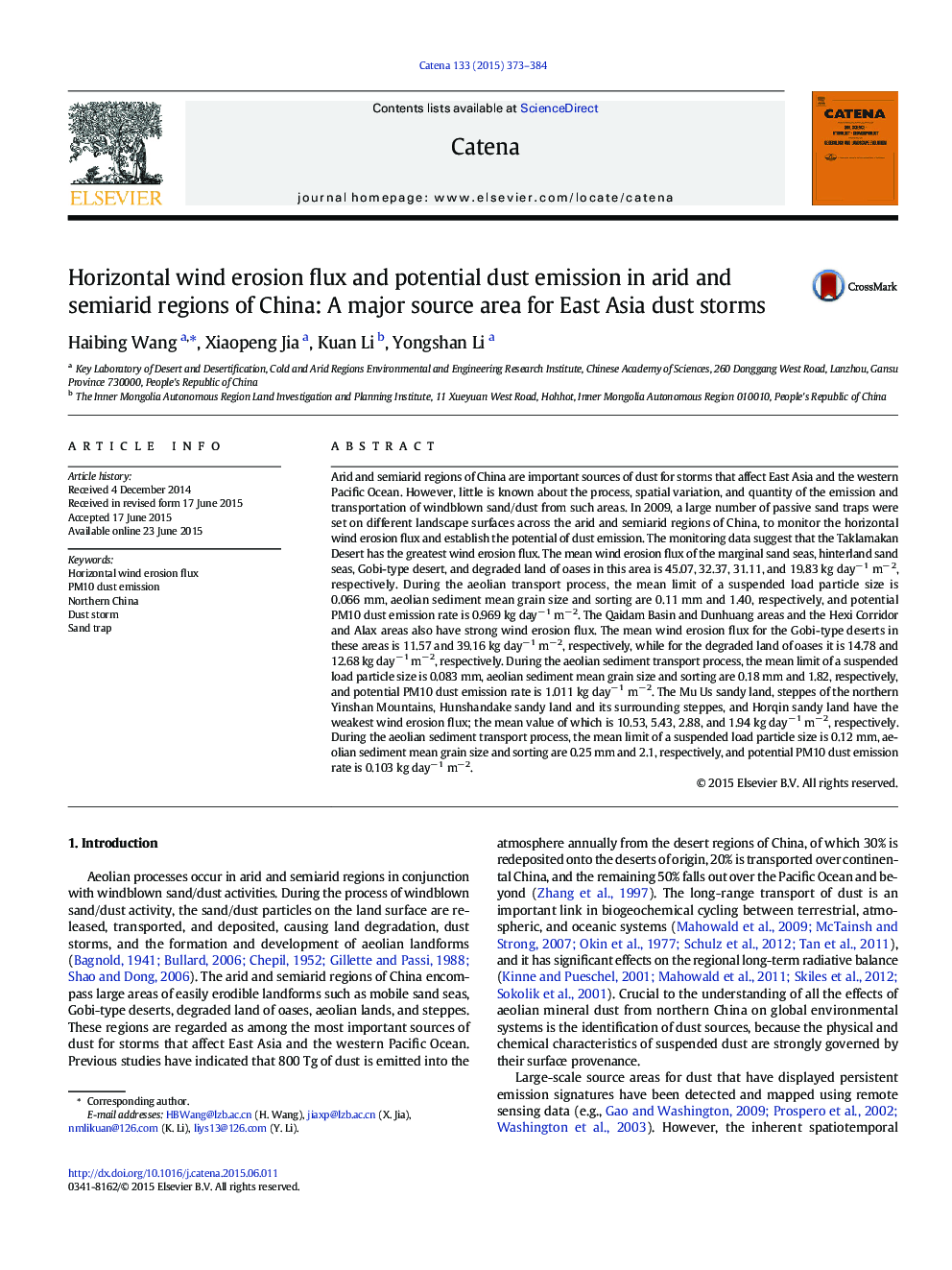| کد مقاله | کد نشریه | سال انتشار | مقاله انگلیسی | نسخه تمام متن |
|---|---|---|---|---|
| 4571054 | 1629219 | 2015 | 12 صفحه PDF | دانلود رایگان |
• Field monitoring of windblown sand/dust transport was implemented in northern China.
• Three modes of particle fraction content change in wind erosion process were determined.
• Particle size limit d for mean aeolian suspended load was estimated.
• Spatial variability of horizontal wind erosion flux and potential PM10 dust release was obtained.
• The Taklamakan Desert has the greatest wind erosion flux.
Arid and semiarid regions of China are important sources of dust for storms that affect East Asia and the western Pacific Ocean. However, little is known about the process, spatial variation, and quantity of the emission and transportation of windblown sand/dust from such areas. In 2009, a large number of passive sand traps were set on different landscape surfaces across the arid and semiarid regions of China, to monitor the horizontal wind erosion flux and establish the potential of dust emission. The monitoring data suggest that the Taklamakan Desert has the greatest wind erosion flux. The mean wind erosion flux of the marginal sand seas, hinterland sand seas, Gobi-type desert, and degraded land of oases in this area is 45.07, 32.37, 31.11, and 19.83 kg day− 1 m− 2, respectively. During the aeolian transport process, the mean limit of a suspended load particle size is 0.066 mm, aeolian sediment mean grain size and sorting are 0.11 mm and 1.40, respectively, and potential PM10 dust emission rate is 0.969 kg day− 1 m− 2. The Qaidam Basin and Dunhuang areas and the Hexi Corridor and Alax areas also have strong wind erosion flux. The mean wind erosion flux for the Gobi-type deserts in these areas is 11.57 and 39.16 kg day− 1 m− 2, respectively, while for the degraded land of oases it is 14.78 and 12.68 kg day− 1 m− 2, respectively. During the aeolian sediment transport process, the mean limit of a suspended load particle size is 0.083 mm, aeolian sediment mean grain size and sorting are 0.18 mm and 1.82, respectively, and potential PM10 dust emission rate is 1.011 kg day− 1 m− 2. The Mu Us sandy land, steppes of the northern Yinshan Mountains, Hunshandake sandy land and its surrounding steppes, and Horqin sandy land have the weakest wind erosion flux; the mean value of which is 10.53, 5.43, 2.88, and 1.94 kg day− 1 m− 2, respectively. During the aeolian sediment transport process, the mean limit of a suspended load particle size is 0.12 mm, aeolian sediment mean grain size and sorting are 0.25 mm and 2.1, respectively, and potential PM10 dust emission rate is 0.103 kg day− 1 m− 2.
Journal: CATENA - Volume 133, October 2015, Pages 373–384
